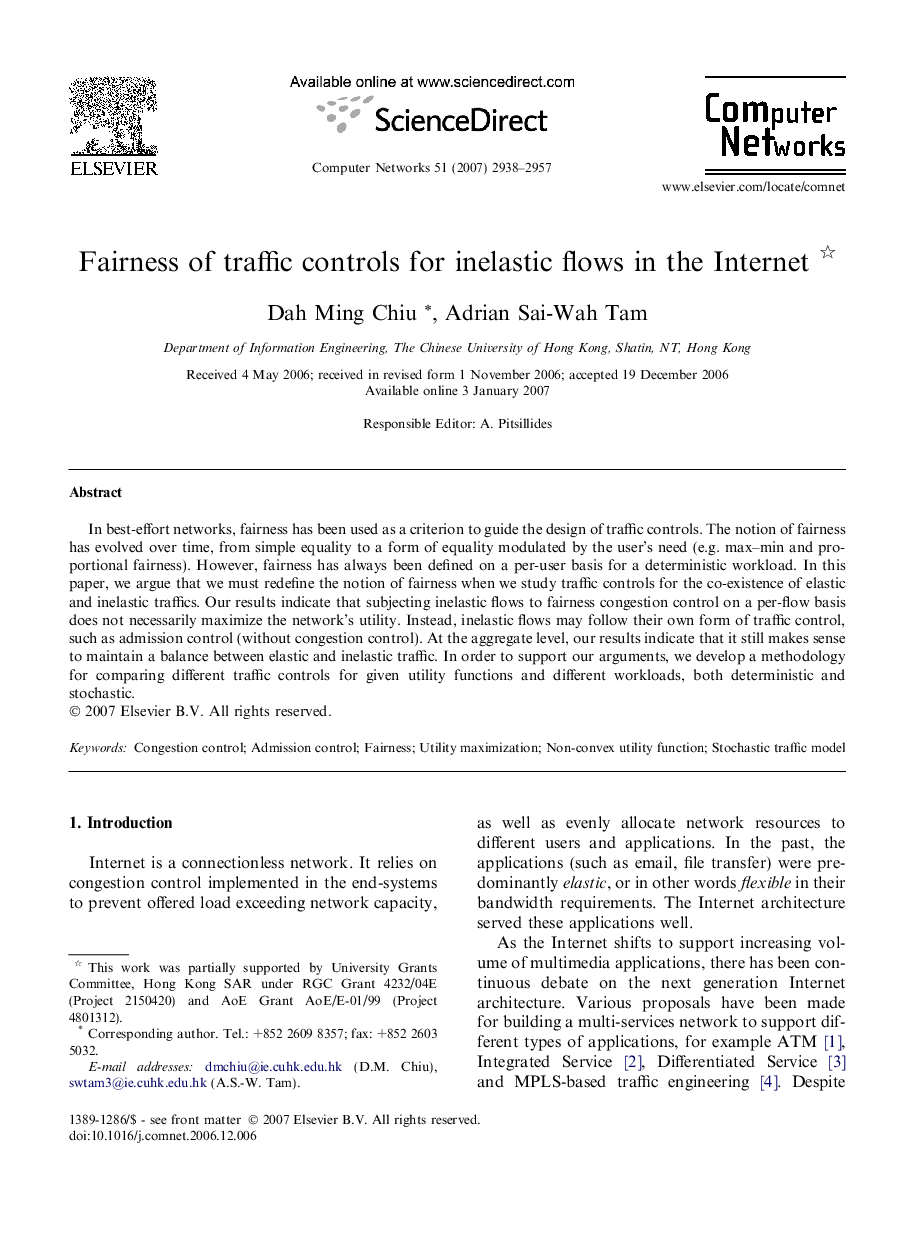| Article ID | Journal | Published Year | Pages | File Type |
|---|---|---|---|---|
| 451519 | Computer Networks | 2007 | 20 Pages |
Abstract
In best-effort networks, fairness has been used as a criterion to guide the design of traffic controls. The notion of fairness has evolved over time, from simple equality to a form of equality modulated by the user's need (e.g. max-min and proportional fairness). However, fairness has always been defined on a per-user basis for a deterministic workload. In this paper, we argue that we must redefine the notion of fairness when we study traffic controls for the co-existence of elastic and inelastic traffics. Our results indicate that subjecting inelastic flows to fairness congestion control on a per-flow basis does not necessarily maximize the network's utility. Instead, inelastic flows may follow their own form of traffic control, such as admission control (without congestion control). At the aggregate level, our results indicate that it still makes sense to maintain a balance between elastic and inelastic traffic. In order to support our arguments, we develop a methodology for comparing different traffic controls for given utility functions and different workloads, both deterministic and stochastic.
Related Topics
Physical Sciences and Engineering
Computer Science
Computer Networks and Communications
Authors
Dah Ming Chiu, Adrian Sai-Wah Tam,
